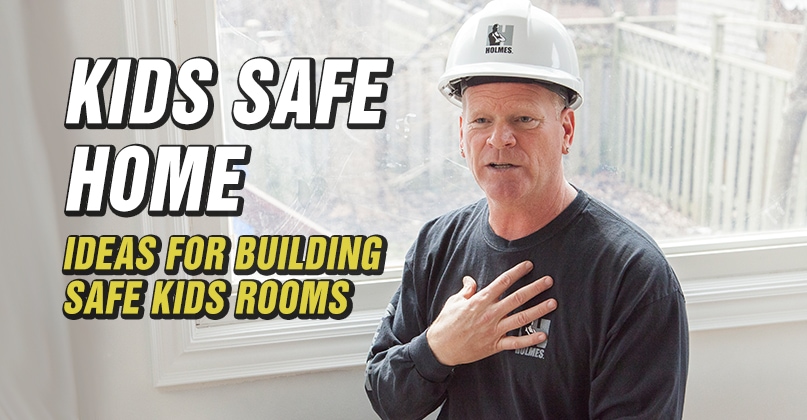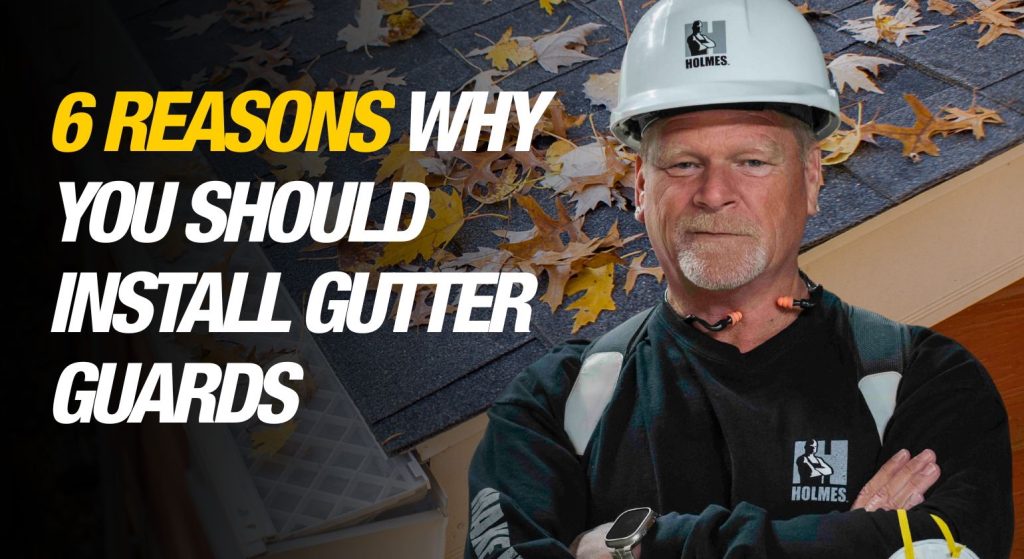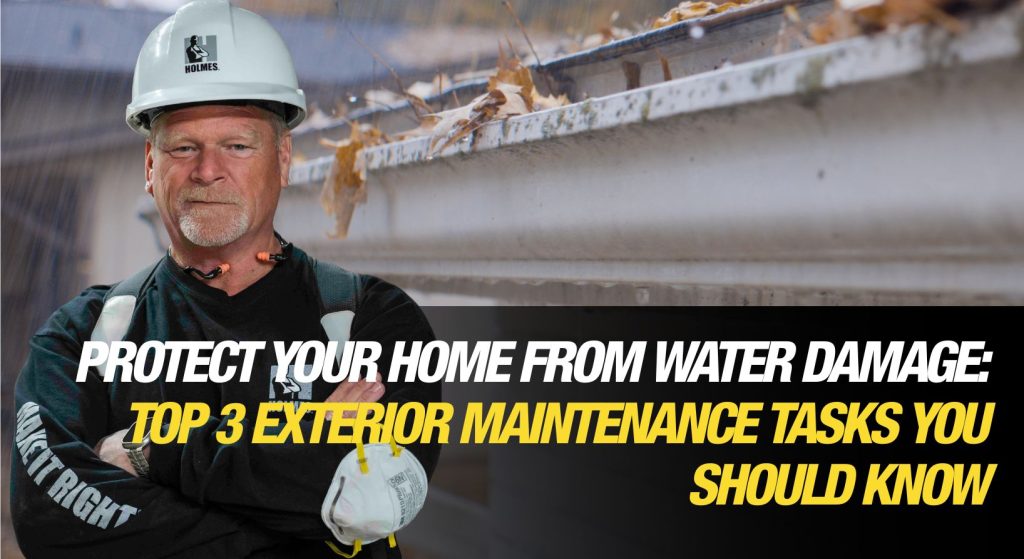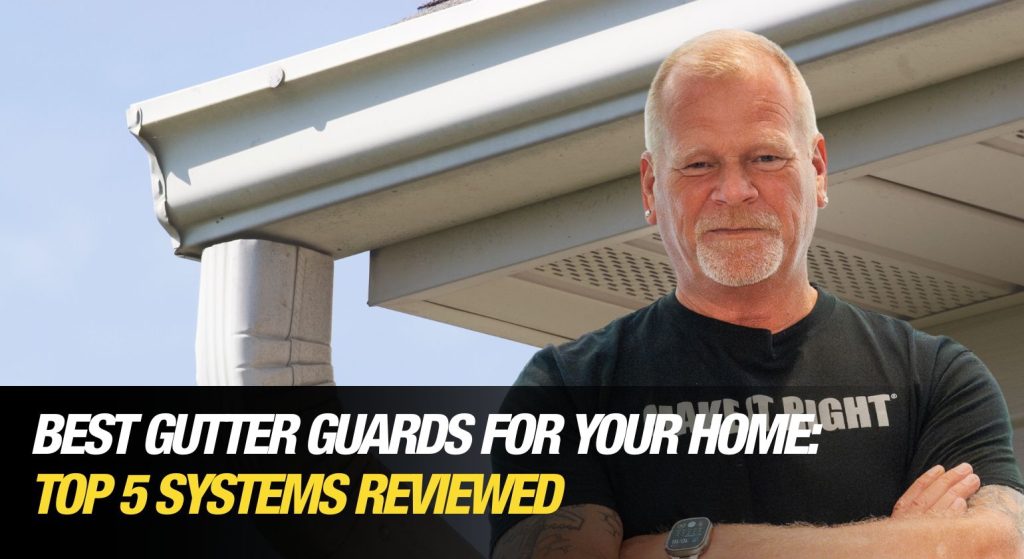Cleaning gutters is one of those chores most homeowners dread—and often put off—but it’s an essential part of protecting your home. Installing gutter guards can significantly cut down on...
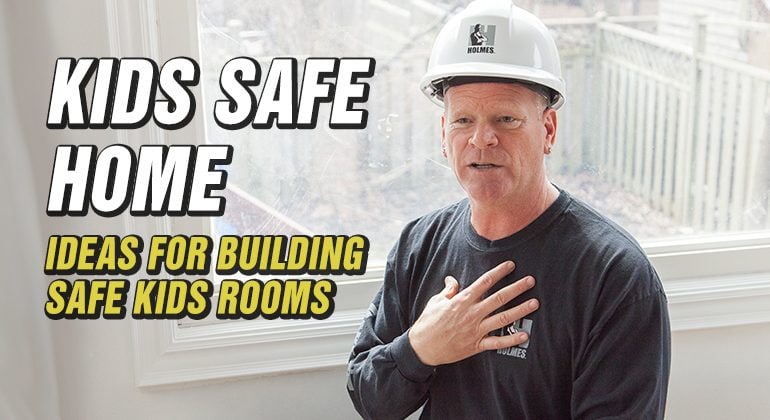
Kids Safe Home: Ideas For Building Safe Kids’ Rooms
By Mike Holmes
Mike’s Advice / Home Safety & Maintenance
Wednesday, February 26th, 2020 @ 2:53pm
How To Design And Renovate A Room That Is Safe For Kids
When I had my first grandchild, Wyatt, I found that I needed to childproof my home for the first time in years – boy did I forget how much work it was! I needed to childproof absolutely everything to keep him, and now my granddaughters, Emily, Cali, and Oakly safe too while they visit me. So here are a few ideas to build safe kids’ rooms for them to live and play in.
Making Your Home Kid-Friendly
Start with putting childproof locks on your doors, windows, cabinets, drawers, and the toilets. You want to keep little fingers from getting caught in places that they shouldn’t. If you’ve got a home with stairs – don’t forget about the guard rails! Kids are quick, it doesn’t take them much to get into trouble, even if you only turn away for a second.
Most importantly, cover all your unused electrical outlets. I don’t know why young children are so fascinated by electrical outlets, but I remember constantly telling my son, Mike Jr. that he should never poke objects into our outlets, and that only seemed to encourage him. It wasn’t until he gave himself a big shock that he learned from his mistake!
I’m a tool guy, I’ve got just about any tool you could name – and I love them all. But when the kids came along, I had to make sure they were all stored and locked away safely because my tools can be a safety hazard. My garage is detached from my home, and with my smart lock installed, I get an alerts to my phone when the lock is engaged – which makes it difficult for anyone to get in without my knowing about it. Now if only I get could my kids to stop “borrowing” my tools. Another great safety feature of smart locks is that you can monitor when your kids get home from school, or prevent them from opening the door for strangers.
Building Better
I talk about our indoor air quality a lot. The air we breathe inside our homes has an effect on how we feel day-to-day. And when the air quality is poor, we could start to feel those effects. It’s often our youngest and oldest that will feel these effects more acutely, so if you’ve got young kids (or your aging parents) at home, pay attention.
When renovating – especially in your child’s major activity areas (nurseries, playrooms, bedrooms), choose materials that will maintain good indoor air quality. Use paints that contain low amounts of volatile organic compounds (VOCs).
There are drywall products on the market that can actively remove VOCs like formaldehyde in a room, without releasing them back into the air.
And don’t ignore your regular maintenance. Check and change your HVAC filters regularly. Prevent mold growth by properly using your exhaust fans to pull moisture out of your kitchens and bathrooms. Finally, have your home tested for radon – there are provinces across Canada that are having their schools tested, so why not at home too?
Safety and your Pool
My grandkids love using my pool in the summertime when they come to visit – and I love being the grandparent with a pool. But my daughter and I have made sure to drill in the rules for safe pool play. That means no running on the pool deck, pool toys need to be locked away when not in use, and there always has to be an adult around during pool time. No exceptions.
Even when the kids know the rules, you still need to take every precaution to prevent children from having accidents. Ideally, you will want to build a fence around the perimeter of the pool that’s at least 4 feet tall. For above ground pools – when not in use, lock or remove the ladder that allows access.
I’ve got cork surrounding my pool deck to give a soft, non-slip option, that’s environmentally friendly too. Cork isn’t your only option to create a safe pool deck. Cover decks made out of concrete or masonry with a non-slip coating. This will keep your pool area safe while resisting damage from moisture and UV rays. Rubber-based pool decks can also provide slip resistance while offering protection from the elements. Choose whichever material you like, just make sure it’s safe, and installed properly.
Floating pool covers are not the same as a safety cover. You want something that blankets the entire pool area to prevent anyone from slipping underneath. There are a lot of solar safety covers on the market that I like which keep your pool area safe while harnessing the power the sun to heat your pool more efficiently. Now that’s smart.
And swimming lessons – whether you’ve got a pool or not, are always a good idea. Start them young.
READ NEXT:
